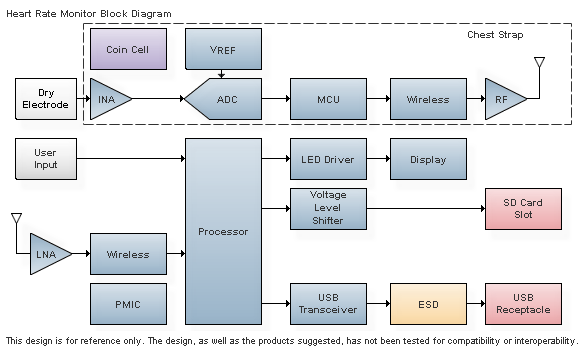BY NICOLE DIGIOSE
The days are getting longer, the trees are growing greener, and spring is in the air. What better way to enjoy it than getting some refreshing exercise outside?
For anyone interested in keeping fit, a heart rate monitor can be a useful tool, as it allows you to manage the intensity of your workout. Optimal fitness isn't just about the amount of exercise you get, but the intensity level of that exercise as well. A heart rate monitor tells you how hard your heart works while you're exercising.

Wrist receiver. Image via isokineticsinc.com
How your heart rate is monitored
As your heart beats, an electrical signal is transmitted through your heart so it's able to contract. Because the electrical activity can be detected through your skin, the transmitter piece of the heart rate monitor is able to pick up the signal, since it's placed around an area where the heartbeat can be felt, such as your chest. Then the transmitter sends an electromagnetic signal containing the data to the wrist receiver, which displays your heart rate.
The most common way to monitor your heart rate is by using a chest strap, which is fastened around your chest to wirelessly transmit continuous heart rate data to the wrist receiver. Chest strap monitors use either analog or digital signals to send along heartbeat information. Basic models can give you average high and low heart rate information, and you don't have to interrupt your workout by stopping or slowing down to view your data.
A finger sensor model can also be used to monitor your heart rate. Though this model doesn't send continuous readings to your wrist receiver, they're more comfortable than chest straps. With a finger sensor model, your heart rate is monitored by reading your pulse through your fingertips, which must be pressed on the sensor of the watch face. Though this usually interrupts exercise, it's easier than stopping to manually count your heart rate.

Image via mouser.com.
Major subsystems of heart rate monitors include: an analog front end (which may include precision/instrumentation amplifiers, filters, ADCs, and multiplexors), a microcontroller to control peripherals and extract a heart rate from the signal(s), I/O communication, and power management.
For more information on the inner workings of heart rate monitors, or to view a list of heart rate monitor products, such as LED drivers, processors, and voltage level shifters, visit mouser.com.
Advertisement
Learn more about Mouser Electronics





